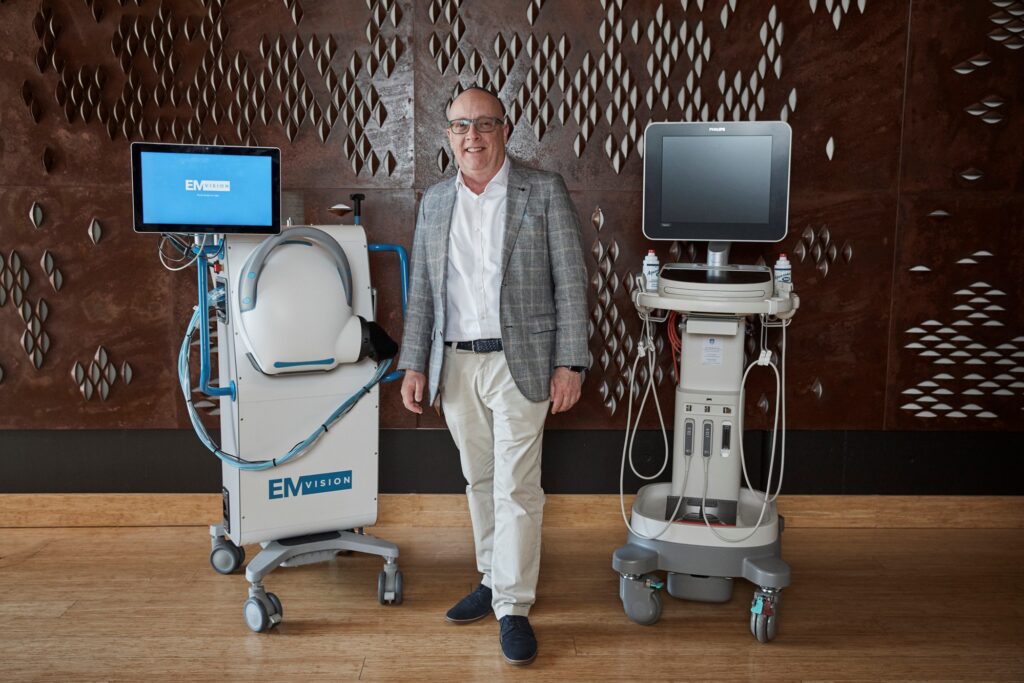
Stroke has long been recognised as one of the world’s biggest killers.
In 2019, stroke was the second leading cause of death and disability worldwide. In Australia, this translates to someone suffering a stroke every 19 minutes and without action, this number is projected to increase to one every 10 minutes by 2050.
These figures indicate that without concentrated investment in improving the diagnosis and care of stroke, the health and economic burden is set to continue to climb. Reducing the number of deaths and lifelong disability will save billions in economic and wellbeing costs.
Importance of “the golden hour”
A person loses millions of brain cells every minute after a stroke’s onset, making the first hour of symptom onset – “the golden hour” – critical for patients. Before intervention can occur, neuroimaging is critical to distinguish between an ischaemic (a vessel blockage) and haemorrhagic (a bleed) stroke – only then can the right clinical decisions be made and appropriate treatment applied.
Regardless of whether it’s a new or recurrent stroke, being able to quickly diagnose and make timely triage and treatment decisions within this “golden hour” can drastically improve the outcome for patients, long term. For regional and rural Australians, who are 17 per cent more likely to suffer a stroke than their metropolitan counterparts, access to this time-critical neuroimaging and specialised stroke care is often limited and poorer outcomes have unfortunately become the norm.
The good news is that there are treatments for stroke. It’s a matter of making these accessible to all patients, regardless of their location.
Australian technology rising to the challenge
Emerging technologies may be the key to providing more equitable access and improved outcomes for patients.
An example is EMVision’s portable neuroimaging solution, which is in development. The device is portable, meaning that it can be used to make life-saving decisions better and faster at a home by paramedics or in hospitals. The brain scanner relies on electromagnetic imaging, which collects diagnostic information from patients and leverages artificial intelligence (AI) to support decision making. It works without the use of ionising radiation to identify the site of the stroke and determine whether it’s an ischaemic or haemorrhagic stroke. These are critical decisions that can be life altering as they are dependent on very specific interventions and drug regimes.
We’ve attracted a number of clinical collaborations to help accelerate our work, including the Australian Stroke Alliance, which has a mission to reduce inequality in stroke care. Most recently, we expanded our partnership with Metro South Health, a major provider of public healthcare in Brisbane’s south, to continue to advance and translate our technology into products that improve patient outcomes.

The partnership, which focuses on research and innovation, will provide us with access to neurology, radiology and critical-care expertise, assistance with expanded clinical study design and development, access to simulation rooms and hospital infrastructure, advancement of bedside processes, as well as input into technology development. Excitingly, the Princess Alexandra Hospital will have access to our latest technology.
Future impact
The dramatic advances that are being developed globally in medical imaging will transform the way clinicians work and will enable more equitable access for patients, irrespective of their income, demographic or location. Beyond our work at EMVision, there is much innovation occurring in the sector.
One such example is a chest X-ray software, developed by Australian scientists, which leverages advancements in AI. The software aids practitioners in more accurately interpreting medical images to diagnose some of the most common and life-threatening illnesses. It’s promising to witness this global uptake in medical innovation and our hope is that this continues to be a focus for entrepreneurs and the clinical community in Australia.
Medical technology is poised to play an increasingly critical role in bolstering healthcare outcomes, particularly for stroke, which requires time sensitive intervention. The development of technologies across medical sectors requires a concentrated approach from industry, research institutions and government alike, and most importantly, it must remain on the national agenda to ensure improved patient outcomes across the country.
Dr Ron Weinberger is CEO of EMVision (ASX:EMV).
